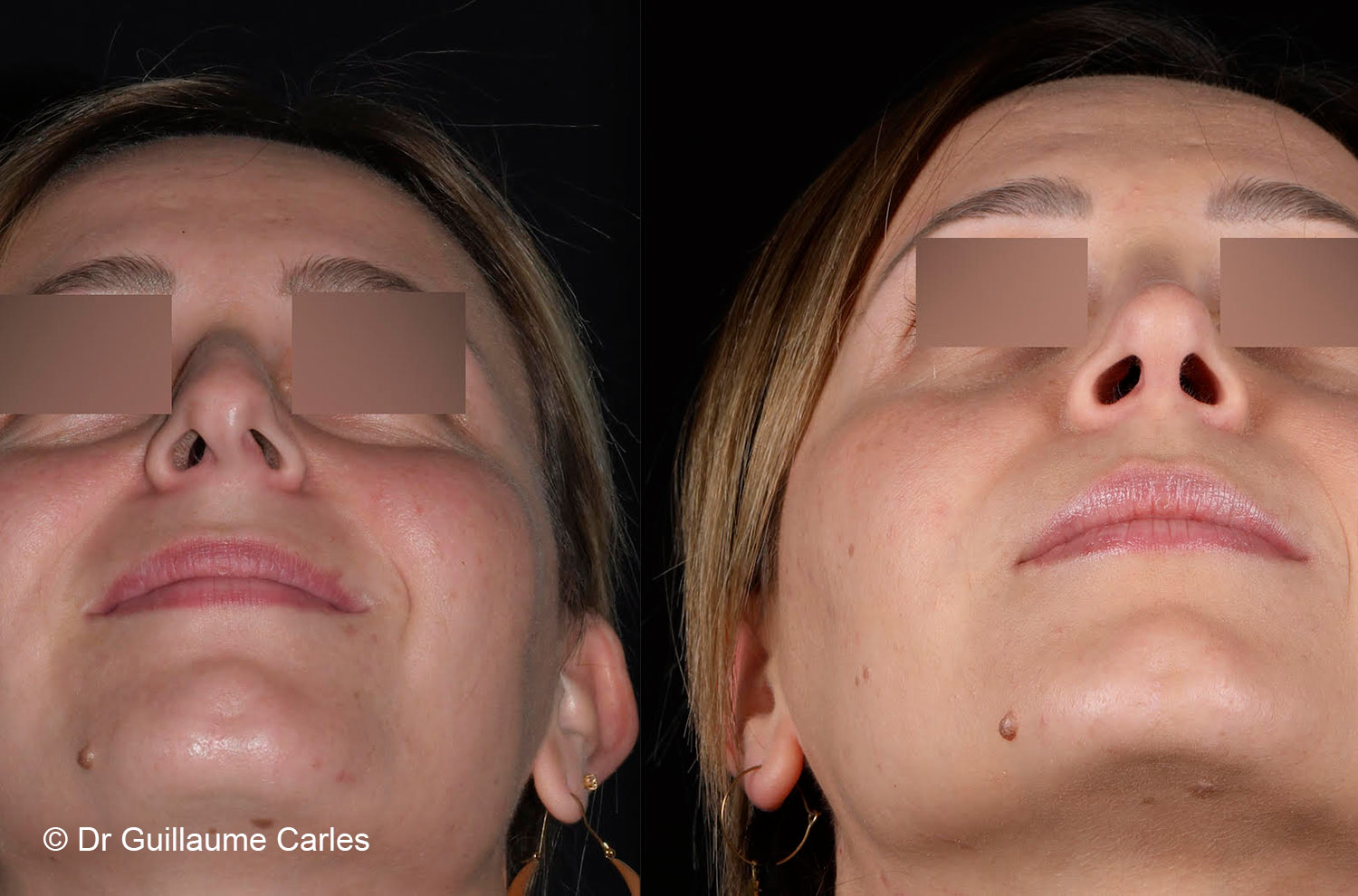Septoplasty
Nasal septum operation
A septoplasty is a surgical procedure performed to correct a deviation of the nasal septum, the wall that separates the nasal cavities. When the nasal septum is deviated, it can cause breathing difficulties.
Chronic nasal obstruction
Chronic nasal obstruction ("stuffy nose") is defined by a feeling of nasal respiratory discomfort lasting more than three months.
Many pathologies can cause this discomfort and are schematically subdivided into two groups:
-
Mucosal abnormalities
This regroups all the causes which lead to a thickening of nasal mucosa and are often associated with other symptoms such as loss of smell, a runny nose and sneezing.
Treatment is generally medical.
Surgery will be discussed in the event of failure of the various local treatments.
Nasal obstruction can sometimes be linked to the presence of nasal tumours, which makes a consultation essential in the event of obstruction of a single nostril. -
Anatomical abnormalities
A nasal obstruction of anatomical origin is generally secondary to a deviation of the nasal septum, hypertrophy of the turbinates or insufficiency of the nasal valve.
Treatment is generally surgical .
Septoplasty
This procedure is offered to patients with a deviation of the nasal septum causing obstruction. The scar is located inside the nasal cavity. The septum is straightened, then fixed by splints placed in the nose. There are no wicks. Breathing is possible through the nose upon waking. You can leave on the evening of the operation and you must schedule an appointment between 5 to 7 days later for the removal of the splints.
The pain is mild. There are no post-operative marks on the face.
Example of septoplasty before / after
Patient with deviation of the nasal septum leading to deviation of the columella and nasal obstruction.
Septoplasty and turbinoplasty
The function of the lower turbinates is to humidify and filter the air inhaled by the nose. In some cases, the turbinates may be too large and/or inflate when lying down therefore causing respiratory discomfort. Radiofrequency or electrocoagulation turbinoplasty involves sending an electric current inside the turbinate, causing retraction and improving breathing. It is frequently associated with septoplasty.
The procedure is performed under local or general anaesthesia. Local anaesthesia is achieved using pledgets soaked with an anaesthetic solution.
The probe is then placed in the inferior turbinate for 5 10 seconds on each side.
This procedure is painless. The consequences are frequently marked by edema of the mucosa which can cause a worsening of the nasal obstruction, that can last up to 3 weeks. It is common to have crusts, which will be removed by washing the nose.
Consultation
Would you like to have an opinion or have nasal septum surgery?
Doctor Carles offers consultations for septoplasty in Montpellier and Paris.
Make an appointment
By telephone at 04 11 93 27 21



